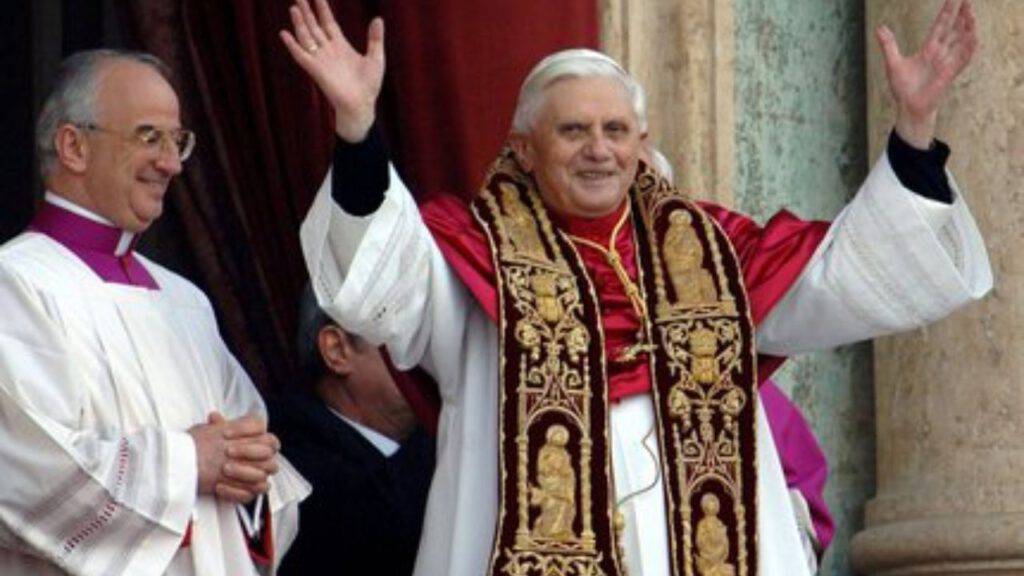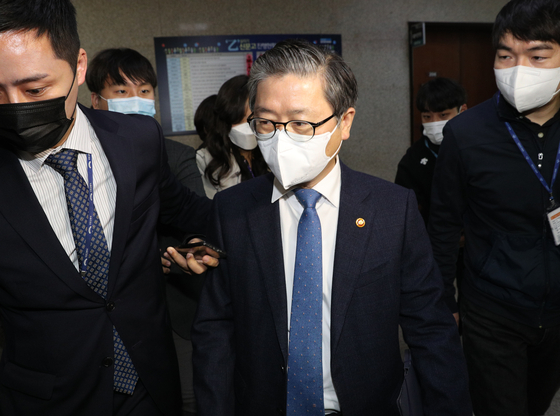The bombshell theses on the pontificate of Benedict XVI are shocking and put their finger on the wound of a story that is still very much discussed today.
Much has been said about Ratzinger’s resignation from Soglio Petrino, but perhaps not everything yet. A legal text now throws another really huge question. In fact, for years Ratzinger, interviewed by journalists and writers, has argued that the Pope is only one. Someone began to ask the question: which of the two?
The visible signs and those that make you think
That there are two Popes in the Vatican, at least visually, is a fact. One is the reigning Pope, the other is the emeritus. The Pope who has the functions of governing the Church is Bergoglio. At the same time, however, there are many signs that question the faithful and make us think, in his own way, that even Ratzinger still has something to say.
In fact, there is a lot of material to be explored. Numerous writers, including Saverio Gaeta with his “The prophecy of the two popes”, published by Rizzoli, have approached the subject with doubts and even skepticism with respect to the common vulgate. Signs such as the question of the Piscatory Ring, which Pope Francis he chose not to wear while still keeping that of a bishop, they suggest.
All those details that question
As well as the Papal coats of arms present at the inauguration ceremony of Bergoglio, when both those of Benedict XVI and Francis were present. But even more evident are the signs that Ratzinger continues to give to his faithful. The white robe, the title of Pontifex pontificum, the giving of the apostolic blessing. And then again books, interviews, forewords, comments on very sensitive issues of a social or ethical-moral nature.
All this also led Cardinal Pell, returning from his exile in Australian prisons, to express his perplexity and to say it clearly, in his own way: Benedict XVI should clarify his position, and the Church should introduce the figure of the Pope Emeritus from a canon law point of view.
Francesco’s recent interview and that statement between the lines
In a recent interview by Bergoglio with the Argentine media, then, the doubt becomes even more sensational. Interviewed by the Argentine media, talking about the theme of death Bergoglio replied: he will not be in Argentina, I will die in Rome as Pope. As ruler or emeritus.
Which makes us think, therefore, first of all, as already reiterated on other occasions, that there could be other renunciations in the future, including yours. But letting it be understood that even the emeritus, for Francis, is actually Pope. So the question returns: how many popes are there in Rome? And what will happen the day Benedict XVI leaves this land?
The legal text of the Colombian lawyer Estefania Acosta
Now a legal text by Colombian lawyer Estefania Acosta enters the matter with a straight leg. The thesis, relaunched by the Libero newspaper, is that the answer is to be found in the way in which Ratzinger wrote his resignation. There is talk of a delicate moment, in which the papacy was besieged from all sides, including that of an internal component of the Roman Curia, redefined the “Mafia of St. Gallen”.
Then there are the thunderous international pressures, which have their culmination in the media, fueled by scandals such as Vatileaks and the events of the “Crow”, that is, the embezzlement of confidential documents and due to unknown hands.
The particular context of Ratzinger’s resignation
The point is that the Church, the last bulwark in front of a globalist and syncretistic world religion of Masonic echo, had now become too uncomfortable in front of the plans of the world.
Now, amidst strange Latin errors in Ratzinger’s Declaratio di resissioni, which one would not expect from a theologian like Benedict XVI that this language is fluent even in private, the thesis of the lawyer Acosta, contained in the book entitled “Benedict XVI: Pope “Emeritus” ?.
The bold but very plausible basic thesis that raises a doubt
The text deals with issues related to canon law and the resignation of Benedict XVI. But the basic thesis is clear. “Benedict XVI has never validly renounced the office of Roman Pontiff for which he remains the only and true Pope of the Catholic Church“, Is the personal conclusion of the Acosta.
For the jurist, the text of the Declaratio written by Ratzinger would therefore have been prepared with care, but in such a way that at first it should not be noticed that Benedict was by no means resigning from the office of Pontiff.
The real key to the invalidity of the resignation
In essence, for this investigation the key to the invalidity of the renunciation would not be the one, already circulated, which states that Benedict was “forced”. But on the contrary Ratzinger would have been well aware of what he was about to do, freely.
That is, Benedict XVI was not resigning from Munus Petrinum, that is, from being Pope. What he was declaring, in reality, it was just that he renounced the Ministerium Petrinum, that is, to be Pope, to carry out the practical actions that are the responsibility of the Pontiff.
What canon law says on the matter
However, this would completely invalidate his resignation. From the point of view of canon law, in fact, “Being” and “doing” are indivisible for the pope. When Ratzinger therefore says that he made his choice “in full awareness”, he could therefore say something absolutely correct but not fully understood.
The key issue is that One cannot be Pope without also carrying out the Petrine ministry, because munus and ministerium are indivisible. This was also confirmed by the Secretary of the Apostolic Nunciature in 2019, Monsignor Sciacca.
READ ALSO: Ratzinger: “The Lord has taken my word from me to make me appreciate silence”
A mistake that Ratzinger would not have made by chance
In the text of his resignation, Benedict XVI explains that the practical exercise of his ministry has become heavy and burdensome for him, so he renounces doing some things that belong to the Pope, such as for example “Proclaim the Gospel and steer the boat of Peter”. But he never said that it was a burden for him, for example, to still be the Pope. Because juridically, it is not enough to give up doing “some things” to no longer be Pope.
A mistake that Ratzinger would not have made by chance, far from it. The juridical logic of the Declaratio is rather well thought out: Ratzinger would therefore be performing a sort of “half service”, but that being juridically impossible it would still be a whole service. Why has it come to this?
READ ALSO: The relevance of Ratzinger’s denunciation. Lgbt and abortion, the powers of the Antichrist
Ratzinger never gave up on bearing witness to the Word of Christ
The answer lies in the fact that Ratzinger, despite his meekness and calmness, never gave up on bearing witness to the Truth of Christ and the Church. But in the face of so many virulent attacks that came from the true powers of this world, which for the Church are those of the prince of the underworld, there was a need to protect and defend it.
“Ratzinger is ambiguous so as not to lie, knowing that in certain cases and under certain conditions the ambiguity is morally justified. That’s why he never answers clearly, that’s why his answers are enigmatic, that’s why his “resignations” are just as “codified” “, concludes Acosta.

READ ALSO: Ratzinger’s prophecy on the future of the Church is coming true
“It seemed that he had resigned from being the Pope but in reality, what he does is “renounce” some practical functions that he thinks correspond to the Pope. And that fractional, incomplete or partial “renunciation” is not valid because it conflicts with divine law: it goes against the institution of the Papacy which rests on a single head, which Jesus did by choosing only Peter as pope, and goes against fullness of the powers that the pontificate enjoys by divine right “.
Giovanni Bernardi
The completeness of the information is in everyone’s interest. For this we ask you to suggest additions or changes and to report any inaccuracies or errors in this or in other articles of Lalucedimaria.it by writing to the following address: [email protected]
—


